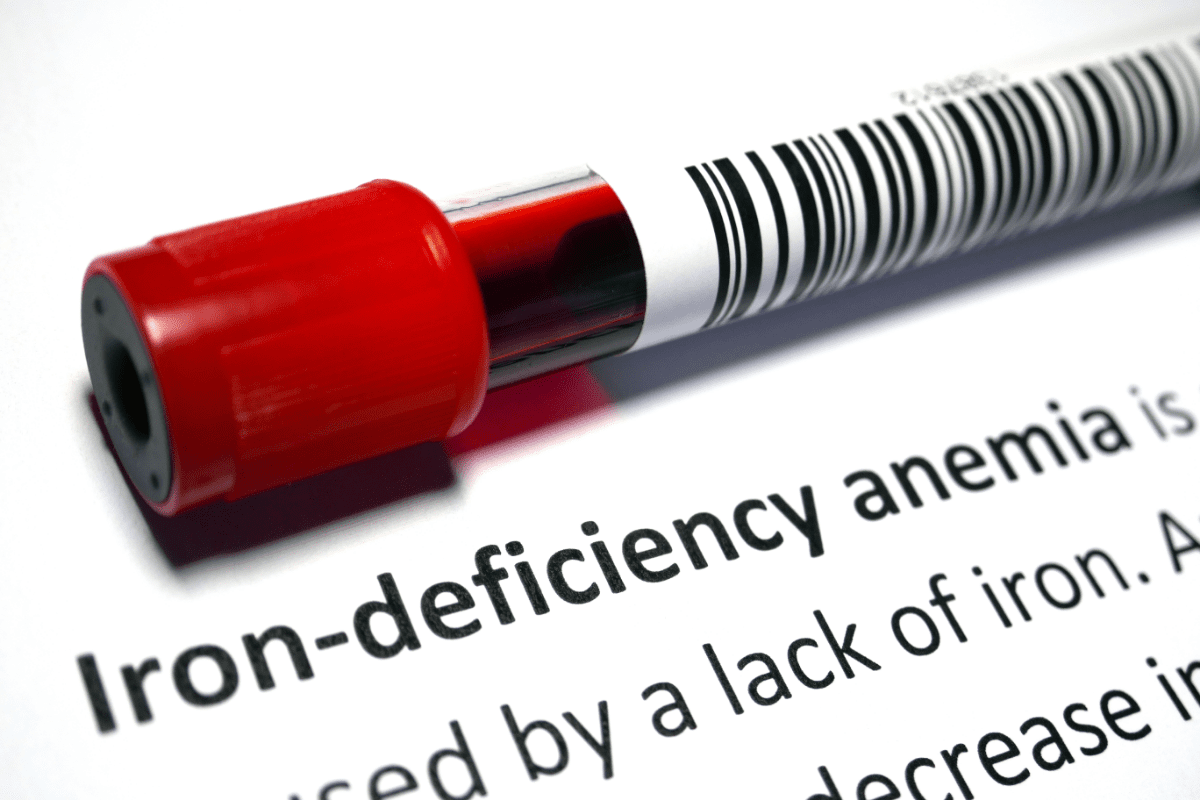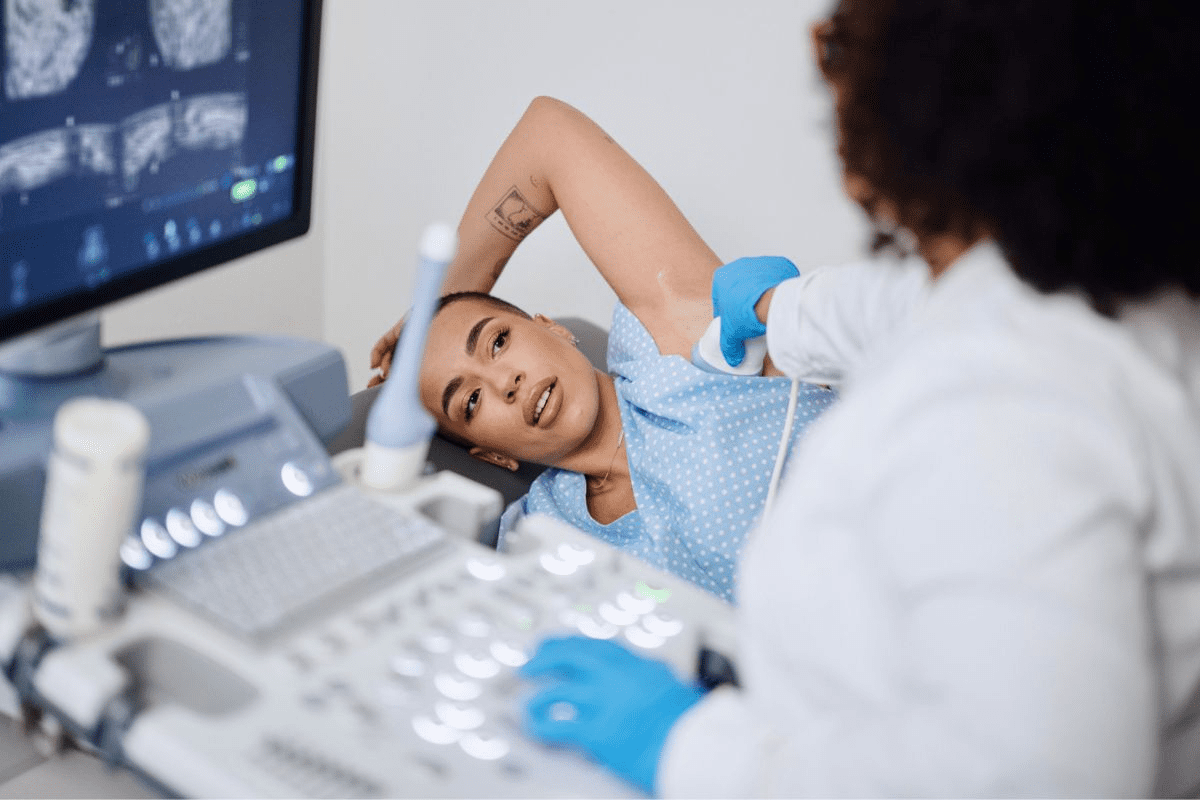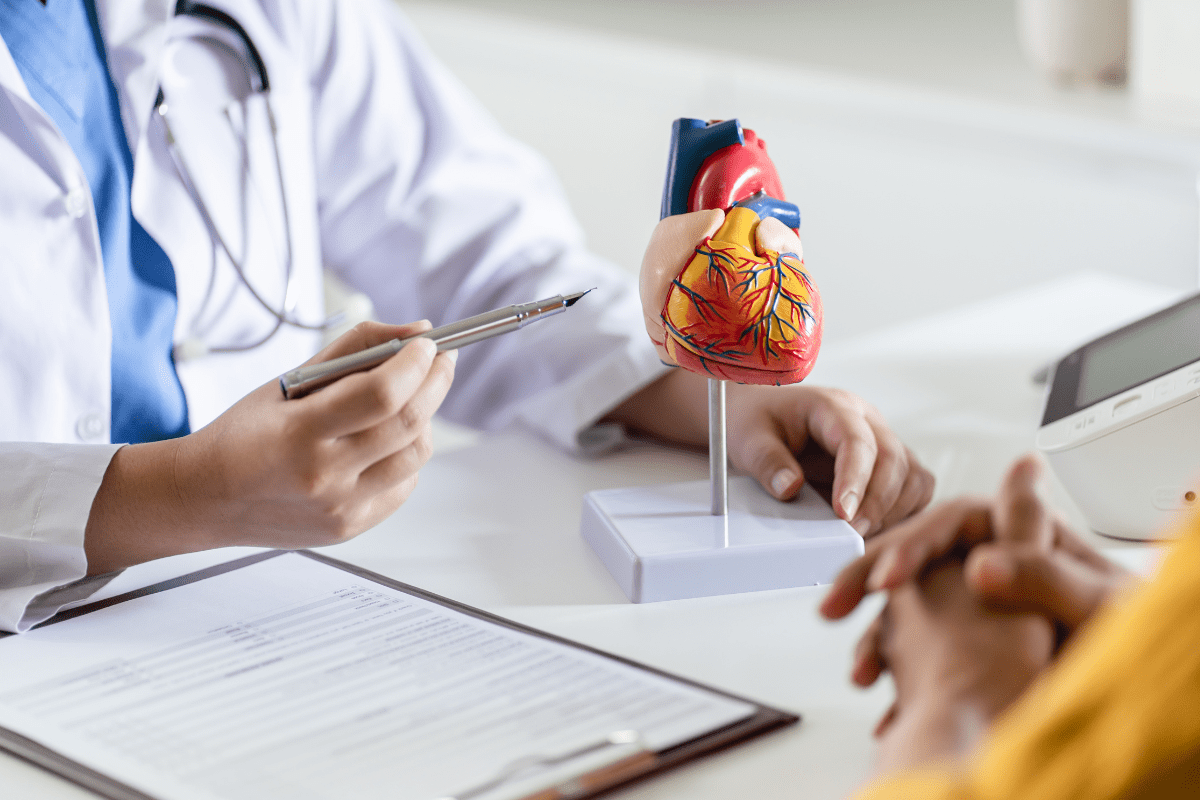Last Updated on September 18, 2025 by kpaltaci
Interested in using your own stem cells for health benefits? Our article explains the techniques for extracting and harnessing your body’s powerful stem cells.
How Are Stem Cells Obtained: Understanding Stem Cell Extraction Methods

Stem cell therapy is a new hope for many medical issues. Knowing how to get stem cells is key to using this therapy. Did you know millions could benefit from regenerative medicine, which needs good stem cell harvesting?
Stem cells come from bone marrow, adipose tissue, and peripheral blood. Each place has its uses in medicine. Getting stem cells is a detailed process that needs careful methods to keep the cells good and alive.
It’s essential to know about stem cell harvesting techniques. This knowledge helps make stem cell treatments work. Learning about self-stem cell extraction shows us how far regenerative medicine has come.
Key Takeaways
- Stem cells can be sourced from bone marrow, adipose tissue, and peripheral blood.
- The stem cell extraction process is complex and requires precise techniques.
- Understanding stem cell harvesting techniques is key to successful treatments.
- Regenerative medicine heavily relies on good stem cell extraction.
- Improving stem cell extraction methods is essential for better medicine.
The Science Behind Stem Cells
Stem cells are at the center of medical research. They can turn into many different cell types. This makes them key in regenerative medicine.
What Are Stem Cells?
Stem cells are special cells that can grow and change into other types of cells. They help in growth, repair, and keeping the body healthy. Their unique abilities make them vital for regenerative medicine.
Types of Stem Cells
There are different kinds of stem cells, each with its uses. The main types are:
- Embryonic Stem Cells: These come from embryos and can become almost any cell type.
- Adult Stem Cells: Found in adults, these can turn into a few types of cells. They help fix and keep tissues healthy.
- Induced Pluripotent Stem Cells (iPSCs): These adult cells can be changed to have many abilities like embryonic stem cells.
Regenerative Capabilities
Stem cells can do a lot. They can:
- Fix damaged heart tissue after a heart attack.
- Grow new skin for people with burns.
- Help treat diseases by replacing old cells with new ones.
Stem cell treatment offers personalized care. It uses the body’s healing powers. As research grows, stem cells will help treat more diseases.
Sources of Stem Cells in the Human Body
The human body has many places where stem cells live. Each place has its special stem cells. These cells are essential for fixing damaged tissues and for research.
Bone Marrow
Bone marrow is a key spot for stem cells. It’s where hematopoietic stem cells live. These cells turn into all kinds of blood cells. Stem cells from bone marrow are obtained under local anesthesia.
Adipose (Fat) Tissue
Fat tissue is also a significant source of stem cells. They are called adipose-derived stem cells (ADSCs). These cells can turn into different types of cells, like fat and bone. They are helpful in fixing damaged tissues.
Peripheral Blood
It is easier to get stem cells from peripheral blood than from bone marrow. Peripheral blood stem cells (PBSCs) move from the bone marrow to the blood. This makes it simple to collect them, like giving blood.
Dental Pulp
Dental pulp, inside our teeth, is full of stem cells. They are called mesenchymal stem cells. These cells can become different types of cells, including those in our teeth. They are handy for fixing teeth and gums.
In summary, our bodies have many places where stem cells live. Each place has its special stem cells. Knowing about these places helps us find new ways to heal and treat diseases.
Professional Stem Cell Extraction Methods
Stem cells are extracted for medical use through several professional methods. Each method is designed for specific sources and uses in regenerative medicine.
Bone Marrow Aspiration
Bone marrow aspiration is a common way to get stem cells. This process includes:
- Extracting bone marrow from the patient’s hip bone
- Using a needle and syringe to aspirate the marrow
- Processing the aspirate to isolate stem cells
Benefits: Bone marrow is full of hematopoietic stem cells. These cells are key to making blood cells. They are used in treatments for blood-related issues.
Peripheral Blood Stem Cell Collection
Peripheral blood stem cell collection is another key method. It involves:
- Mobilizing stem cells into the bloodstream using growth factors
- Apheresis, a process that separates stem cells from other blood components
- Collecting the stem cells for further processing
Advantages: This method is less invasive than bone marrow aspiration. It can also collect a large number of stem cells.
Adipose-Derived Stem Cell Extraction
Adipose-derived stem cell extraction includes:
- Liposuction to remove fat tissue
- Processing the fat tissue to isolate stem cells
- Using these stem cells for therapeutic purposes
Key Benefits: Adipose tissue is rich in mesenchymal stem cells. These cells have great promise for repairing and regenerating tissues.
These professional stem cell extraction methods are essential for advancing regenerative medicine. They offer various approaches for different medical needs and uses.
How to Extract Your Otem Cells? Medical Reality vs. Misconceptions
Extracting your stem cells has become popular, but knowing what’s real and what’s not is key. As more people look into regenerative medicine, it’s vital to understand what’s possible and what’s not.
The Limitations of Self-Extraction
Extracting stem cells at home may seem simple, but in reality it is complex and risky. Stem cell extraction is a complex medical procedure that needs special training and tools to do right.
Why Professional Oversight is Essential
Getting stem cells done by a pro is safer. Trained healthcare professionals check if it’s right for you, cutting down on risks.
- Ensures the sterility and safety of the procedure
- Provides accurate assessment and handling of extracted cells
- Minimizes the risk of infection or other complications
Legal and Safety Considerations
There are legal and safety issues with stem cell extraction. Regulatory frameworks differ by place, and not all methods are approved.
Legitimate Self-Collection Options
For those interested in self-collection, some options exist, like cord blood banking for newborns. But it’s essential to understand their limits and benefits.
Always talk to a healthcare pro before trying stem cell extraction or banking. They can help figure out the best and safest option for you.
The Stem Cell Harvesting Process in Clinical Settings
Clinical settings offer a safe place for stem cell harvesting. This ensures the best results for patients. It’s key for the success of the stem cell extraction.
Pre-Procedure Preparation
Before stem cell harvesting, patients get a detailed medical check-up. This includes blood tests and a look at their medical history. Preparation is key to minimizing risks and ensuring the best possible outcomes.
They also get instructions on what to do before the procedure. This might include eating certain foods or taking certain medications. It helps make the procedure safer and more effective.
During the Extraction
Experienced medical professionals use special equipment for the procedure. The method depends on where the stem cells come from. The procedure is typically done under local anesthesia to minimize discomfort.
During the extraction, the medical team watches the patient’s vital signs. They make sure everything goes smoothly and safely.
Post-Procedure Care
After the procedure, patients get care instructions to help them recover. This includes rest, wound care, and follow-up appointments. It helps monitor healing and watch for any complications.
Proper post-procedure care is essential for minimizing the risk of complications and ensuring the quality of the harvested stem cells.
Recovery Timeline
The recovery time varies based on the individual and the harvesting method. Generally, patients can get back to normal in a few days to a week.
Following the recovery instructions from their healthcare provider is important. It helps ensure a quick and easy recovery.
Stem Cell Isolation Techniques
Stem cell isolation techniques are key to unlocking their full therapeutic power. Isolating these cells well is essential for research and treatment development.
Density Gradient Centrifugation
Density gradient centrifugation is a standard method for isolating stem cells. It works by layering cells over a medium and then spinning them. This separates cells by density, making it easier to get stem cells alone.
This method is simple and can handle lots of cells. But it might not get stem cells perfectly clean, as other cells can mix in.
Flow Cytometry
Flow cytometry is a detailed technique for isolating stem cells. It uses antibodies to find and sort stem cells by their surface markers. This makes it very specific and can get stem cells very pure.
But it needs special equipment and skills. This makes it more complex and possibly more costly than other methods.
Magnetic-Activated Cell Sorting
Magnetic-activated cell sorting (MACS) is another way to isolate stem cells. It uses magnetic beads to mark cells for separation. This method is simple and effective, and it’s good for handling lots of cells.
It’s also less expensive than flow cytometry. But, the quality of the isolated cells can depend on the antibodies used.
Laboratory Processing Requirements
Stem cell processing in the lab needs careful attention to keep cells alive and working well. This includes working in a clean space, using the right media, and checking cell health.
Good processing is key for success in research or treatment. It makes sure the stem cells are of high quality for their intended use.
Embryonic Stem Cell Derivation
Getting embryonic stem cells is a complex task. It involves both ethics and science. These cells come from embryos, usually a few days old. They can turn into any cell in our body.
Sources and Methods
Most embryonic stem cells come from blastocysts. These are embryos about 5 days old. The process has several steps:
- Donation of embryos: Usually, these are leftover from in vitro fertilization.
- Isolation of the inner cell mass: This is where embryonic stem cells come from.
- Culturing the cells: The cells are grown in a lab to create stem cell lines.
Ethical Considerations
Getting embryonic stem cells raises big ethical questions. The main issue is using human embryos for research. People debate the moral status of embryos and their use in science.
Research Applications
Despite the ethics, embryonic stem cells are very useful. They help in:
- Learning about human development and diseases.
- Finding new drugs and testing them.
- Regenerative medicine, to fix damaged tissues.
These cells give us a deep look into human biology and disease. They are key for moving medical science forward.
Induced Pluripotent Stem Cells (iPSCs)
iPSCs are a key tool in personalized medicine. They turn adult cells into a pluripotent state. This breakthrough is changing regenerative medicine, opening doors for cell therapy and tissue repair.
Reprogramming Adult Cells
Creating iPSCs means turning adult cells, like skin or blood cells, into pluripotent cells. This lets them become different cell types, like embryonic stem cells.
The process is complex. It uses viral vectors or other methods to add genes. The resulting iPSCs can then be grown and turned into specific cell types for therapy or research.
Advantages Over Other Sources
iPSCs have big advantages over other stem cells:
- Availability: Adult cells are easy to get from many sources.
- Immunocompatibility: iPSCs from a patient’s cells lower immune rejection risks.
- Ethical considerations: Using adult cells avoids the ethical issues of embryonic stem cells.
Future for Personalized Medicine
iPSCs hold a lot of promise for personalized medicine. They can make tailored cell therapies that fit a patient’s needs perfectly.
Umbilical Cord Blood Banking
Umbilical cord blood banking is a new way to save stem cells for future medical use. It collects blood from the umbilical cord after birth. This blood is full of stem cells that can grow into different types of cells.
Collection Process
Getting umbilical cord blood is easy and doesn’t hurt anyone. It happens right after the baby is born and the cord is cut. The blood is taken from the umbilical cord vein in just a few minutes.
Key steps in the collection process include:
- Preparation of the umbilical cord for blood collection
- Extraction of the blood from the umbilical cord vein
- Storage of the collected blood in a sterile container
- Transportation to a cord blood bank for processing and storage
Storage Methods
The cord blood is then stored in a special facility. This process keeps the stem cells alive.
Cryopreservation is used to freeze the blood. This keeps the stem cells safe. The freezers keep the temperature at -196 °C.
Future Use
The stem cells in cord blood banks can be used in many ways. They can help with:
- Treatments for blood-related disorders, such as leukemia
- Regenerative medicine applications, such as repairing damaged tissues
- Potential future treatments for currently incurable diseases
Public vs. Private Banking
There are two main types of cord blood banking: public and private. Public banks store donated cord blood for anyone in need. Private banks store cord blood for the family only.
Public Banking: Donated cord blood is stored and made available for anyone who needs a transplant.
Private Banking: Cord blood is stored for the exclusive use of the donor family.
Choosing between public and private banking depends on personal preferences and medical needs. As regenerative medicine grows, the uses for stored cord blood will likely increase.
Stem Cell Extraction for Autologous Treatments
Autologous stem cell extraction takes stem cells from a patient for their own treatment. This method is popular in regenerative medicine for its personalized approach.
Self-Donation Process
The process starts with a medical check-up to see if the patient is a good candidate. Then, stem cells are taken out using methods like bone marrow aspiration or fat tissue harvesting.
- Bone Marrow Aspiration: This method takes stem cells from the bone marrow, usually from the iliac crest.
- Adipose Tissue Harvesting: Stem cells are taken from fat tissue, often through liposuction.
Benefits of Using Your Own Cells
Using your own stem cells for treatment has many advantages. It reduces the chance of immune rejection and can lead to better healing.
- Less chance of complications from immune reactions.
- Potential for faster recovery and healing.
- Treatment tailored to your specific needs.
Applications in Regenerative Medicine
Autologous stem cell treatments are used in many areas of regenerative medicine. They help with orthopedic issues, heart diseases, and some autoimmune disorders.
- Orthopedic Conditions: They treat osteoarthritis, tendon injuries, and other musculoskeletal problems.
- Cardiovascular Diseases: They might help repair damaged heart tissue.
Cost Considerations
The cost of autologous stem cell extraction and treatment varies. It depends on the procedure, the condition, and where you get treated.
It’s important to talk to healthcare professionals about the costs and benefits of autologous stem cell treatments.
Commercial Stem Cell Banking Services
Commercial stem cell banking has changed how we save stem cells for future health needs. These services offer a safe way to store stem cells. They can be used in many medical treatments and therapies.
Available Options in the United States
In the United States, many commercial stem cell banking services are available. They offer different storage options and services. Some well-known providers include:
- Cord Blood Registry (CBR)
- Viacord
- Cryo-Cell International
These companies have various packages. They include the collection kit, processing, and storage of stem cells. It’s important to compare these services to find the best one for you.
Cost Considerations
The cost of commercial stem cell banking varies. It depends on the provider and the services. The initial cost can be between $1,000 and $2,000. This includes the collection kit and initial processing. Annual storage fees can be between $100 and $300.
Long-term Storage Solutions
Long-term storage is key in stem cell banking. Good providers use advanced freezing techniques. They keep stem cells alive for a long time.
- State-of-the-art cryogenic tanks
- Continuous monitoring systems
- Backup power systems
These steps ensure stem cells stay viable for a long time.
Choosing a Reputable Provider
Choosing a good stem cell banking service is important. Look for:
- Accreditation by relevant regulatory bodies
- Experience and reputation in the industry
- Transparency in their processes and costs
It’s recommended to thoroughly research possible providers. Ask about their accreditation, success rates, and customer service.
The Future Of Stem Cell Collection Technologies
Stem cell collection is on the verge of a big change. New ways to get stem cells are being developed. These methods aim to get more cells and make the process less invasive.
Emerging Extraction Methods
New technologies are being looked into to improve stem cell extraction. Some of these include:
- Microfluidics-based devices that can isolate stem cells with high precision.
- Advanced bioreactors that can culture and expand stem cells more efficiently.
- Nanotechnology applications that can improve the targeting and delivery of stem cells.
Minimally Invasive Techniques
There’s a big move towards making stem cell collection less invasive. Techniques like:
- Apheresis for peripheral blood stem cell collection.
- Needle biopsies for adipose tissue harvesting.
are becoming more common. They help patients recover faster and feel more comfortable.
Enhanced Yield Approaches
Researchers are working hard to get more stem cells. They’re using methods like:
| Method | Description | Potential Benefit |
| Growth Factor Stimulation | Using growth factors to stimulate stem cell production. | Increased yield of viable stem cells. |
| Culture Medium Optimization | Improving the culture medium for better stem cell growth. | Enhanced stem cell health and viability. |
| Bioreactor Technology | Utilizing bioreactors for large-scale stem cell expansion. | Scalability for clinical applications. |
Home Collection Possibilities
The idea of collecting stem cells at home is being explored. It could be used for:
- Point-of-care treatments, where stem cells are collected, processed, and reapplied in a single visit.
- Personal stem cell banking for future autologous use.
But, there are many technical, safety, and regulatory challenges to overcome before home collection can be a reality.
Risks And Complications Of Stem Cell Extraction
It’s important to know the risks and complications of stem cell extraction. This knowledge helps you make informed choices. While stem cell extraction is usually safe, there are risks involved.
Common Side Effects
Some common side effects of stem cell extraction include:
- Pain or discomfort at the extraction site
- Swelling or bruising around the area where the stem cells were extracted
- Fatigue or feeling tired
- Infection, though rare with proper care
These side effects are usually short-term and go away in a few days.
Rare But Serious Complications
There are also serious complications that can happen, though they are less common:
- Bleeding or hematoma at the extraction site
- Nerve damage or numbness
- Infection that can spread if not managed properly
- Adverse reactions to the medications used during the procedure
It’s important to know about these complications and talk to a healthcare provider about them.
Risk Mitigation Strategies
To lower the risks of stem cell extraction:
- Follow pre-procedure instructions carefully
- Make sure the procedure is done by a qualified healthcare professional
- Follow post-procedure care instructions to reduce complications
- Go to follow-up appointments as scheduled
By following these steps, you can greatly reduce your risk of complications.
When to Seek Medical Attention
Seek medical help right away if you notice:
- Severe pain that doesn’t get better with medication
- Signs of infection, like redness, swelling, or fever
- Unusual bleeding or discharge
- Dizziness or fainting
Getting medical help quickly can stop minor issues from becoming serious problems.
Legal and Regulatory Framework for Stem Cell Procedures
It’s important for patients and doctors to know the laws about stem cell treatments. The rules are complex, with many groups watching over them.
FDA Regulations
The FDA is key in the US for stem cell rules. FDA regulations say how stem cells can be handled and used. They focus on minimal manipulation and homologous use to decide if a product needs FDA approval.
For example, if a stem cell product is seen as a drug, it must go through strict testing and approval. The FDA also checks how these products are made and labeled to make sure they are safe and work well.
State-Specific Laws
State laws also play a big role in stem cell treatments. Some states limit or allow stem cell use. For example, some states ban certain stem cells or require special licenses for clinics.
It’s vital for patients and doctors to know the laws in their state. These laws can change what stem cell treatments are available and legal.
International Variations
Stem cell laws vary a lot around the world. Some countries are more open, while others are stricter. For example, some allow embryonic stem cells in research and treatment, while others don’t.
People looking for stem cell treatments abroad need to be careful. They should check the laws of the country they’re considering. It’s important to make sure treatments are given in a place that follows the law and is reputable.
Avoiding Unregulated Procedures
One big danger in the stem cell field is unregulated clinics. These clinics can be very risky for patients. To stay safe, patients should make sure any treatment they choose is legal and regulated.
This means checking if the clinic is licensed, following FDA rules, and looking into the doctors’ qualifications.
Stem Cell Therapy Applications
Stem cell therapy is changing how we treat health problems. It offers new ways to fix damaged tissues and treat many diseases. This method has become more popular because of its ability to heal and treat various conditions.
Current Approved Treatments
Some stem cell therapies are now used in hospitals. They help with blood disorders like leukemia and lymphoma. Approved therapies can replace damaged blood cells, helping patients recover.
- Bone marrow transplants for blood cancers
- Stem cell therapies for certain autoimmune diseases
- Treatments for corneal damage using stem cells
Experimental Therapies
Many new stem cell therapies are being tested. These experimental therapies are in clinical trials. They offer hope for treating diseases that are hard to cure.
- Research into using stem cells for heart disease
- Studies on stem cell therapies for neurological disorders
- Investigations into stem cell treatments for orthopedic injuries
Conditions Being Researched
Stem cell therapy is being studied for many diseases. It’s being looked at for treating degenerative diseases, injuries, and complex conditions. Key areas include:
- Neurodegenerative diseases such as Parkinson’s and Alzheimer’s
- Cardiovascular diseases and heart failure
- Orthopedic conditions like osteoarthritis
- Autoimmune diseases
Finding Clinical Trials
For those looking into stem cell therapy trials, there are resources. The ClinicalTrials.gov database lists ongoing and completed trials. You can search by condition and location.
Knowing about stem cell therapy can help patients and doctors make better choices. It can lead to finding the right treatment or trial.
Conclusion: The Future Of Personalized Stem Cell Medicine
The future of stem cell medicine is changing fast. We’re seeing big steps forward in personalized treatments. This is thanks to the growing understanding of stem cells.
New ways to get stem cells are making treatments better. This means we can use stem cells to fix many health problems. It’s a big step forward.
Research on stem cells is leading to new ideas. We’re learning more about how to use them for better treatments. This could change how we treat diseases.
Stem cell therapy is getting more precise and effective. This is thanks to ongoing research. We’re on the path to better treatments for many conditions.
Personalized stem cell medicine could change healthcare a lot. It’s a key area of research and innovation. We can expect big changes in the future.
FAQ
Can Stem Cells Be Used For Autologous Treatments?
Yes, using your own stem cells is possible. This is used in regenerative medicine and can be beneficial. But, think about the cost first.
What Are The Legal And Regulatory Considerations For Stem Cell Procedures?
Laws and rules from the FDA, states, and other countries apply to stem cell treatments. Always choose safe and legal options to avoid risks.
How Do I Choose A Reputable Commercial Stem Cell Banking Service?
Look at the cost, how they store the cells, and the company’s reputation. It’s important to compare services in the U.S. and understand their long-term plans.
What Is The Future Of Stem Cell Collection Technologies?
New methods and tools are being developed for stem cell collection. These include collecting stem cells without much pain and getting more cells. But, collecting stem cells at home is not yet safe or legal.
What Are Induced Pluripotent Stem Cells (Ipscs) And Their Advantages?
iPSCs are made from adult cells that can grow into many types of cells. They are seen as a good alternative to embryonic stem cells. They also offer the chance for personalized medicine.
What Is The Difference Between Public And Private Umbilical Cord Blood Banking?
Public banking means donating cord blood for others. Private banking keeps it for your family’s future use. Your choice depends on what you prefer and your medical needs.
Are There Any FDA-Approved Stem Cell Therapies?
Yes, the FDA has approved some stem cell treatments for blood disorders. Researchers are also looking into new uses for stem cells. You can find out about clinical trials through medical databases.
What Are The Risks And Complications Associated With Stem Cell Extraction?
You might feel pain, have bruises, or feel tired after the procedure. But, serious problems like infections or nerve damage can also happen. To stay safe, get checked by a doctor before and after the procedure.
What Is The Process Of Stem Cell Harvesting In Clinical Settings?
The process starts with getting ready for the procedure. Then, the extraction happens. After that, you need to rest and recover. How long you need to rest depends on the method used and your health.
Can I Extract My Own Stem Cells At Home?
Some kits claim to help you extract stem cells at home. But, it’s safer to get help from a doctor. Only some places let you collect your own stem cells with a doctor’s help.
What Are The Different Types Of Stem Cells?
There are many types, like embryonic and adult stem cells. Adult stem cells are found in tissues like bone marrow.
What Are Stem Cells, And How Are They Obtained?
Stem cells can grow into different types of cells. They come from places like bone marrow and umbilical cord blood. Special methods are used to get them.





